
The National Reconnaissance Office (NRO) is a member of the United States Intelligence Community and an agency of the United States Department of Defense which designs, builds, launches, and operates the reconnaissance satellites of the U.S. federal government, and provides satellite intelligence to several government agencies, particularly signals intelligence (SIGINT) to the NSA, imagery intelligence (IMINT) to the NGA, and measurement and signature intelligence (MASINT) to the DIA.

Delta IV was a group of five expendable launch systems in the Delta rocket family introduced in the early 2000s. Originally designed by Boeing's Defense, Space and Security division for the Evolved Expendable Launch Vehicle (EELV) program, the Delta IV became a United Launch Alliance (ULA) product in 2006. The Delta IV was primarily a launch vehicle for United States Air Force (USAF) military payloads, but was also used to launch a number of United States government non-military payloads and a single commercial satellite.

United Launch Alliance, LLC (ULA) is an American aerospace manufacturer, defense contractor and launch service provider that manufactures and operates a number of rocket vehicles that launch spacecrafts into orbits around Earth and other bodies in the Solar System.
Magnum was a class of SIGINT spy satellites reportedly operated by the National Reconnaissance Office (NRO) for the United States Central Intelligence Agency (CIA). The program remains classified, and the information that exists is speculative.
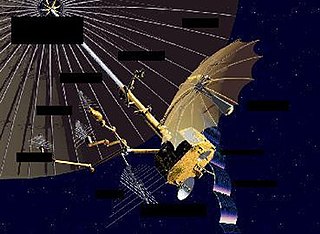
Orion, also known as Mentor or Advanced Orion, is a class of United States spy satellites that collect signals intelligence (SIGINT) from space. Operated by the National Reconnaissance Office (NRO) and developed with input from the Central Intelligence Agency (CIA), eight have been launched from Cape Canaveral on Titan IV and Delta IV launch vehicles since 1995.
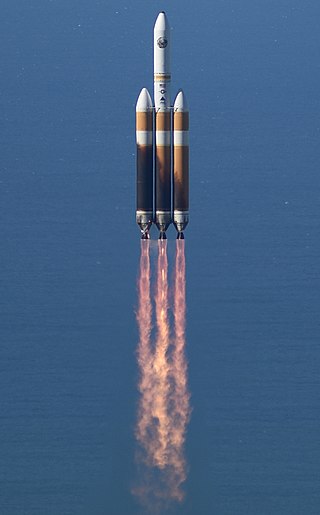
The Delta IV Heavy is an expendable heavy-lift launch vehicle, the largest type of the Delta IV family. It is the world's third highest-capacity launch vehicle in operation, behind NASA's Space Launch System and SpaceX's Falcon Heavy and closely followed by CASC's Long March 5. It is manufactured by United Launch Alliance (ULA) and was first launched in 2004. ULA will retire the Delta IV Heavy in 2024. As of June 2023, one flight remains.

USA-200, also known as NRO Launch 28 or NROL-28, is an American signals intelligence satellite, operated by the National Reconnaissance Office. Launched in 2008, it has been identified as the second satellite in a series known as Improved Trumpet, Advanced Trumpet, or Trumpet follow-on; a replacement for the earlier Trumpet series of satellites.

USA-212 was the first flight of the Boeing X-37B Orbital Test Vehicle 1, an American robotic vertical-takeoff, horizontal-landing (VTHL) spaceplane. It was launched aboard an Atlas V rocket from Cape Canaveral on 22 April 2010, and operated in low Earth orbit. Its designation is part of the USA series.

USA 202, previously NRO Launch 26 or NROL-26, is a classified spacecraft which is operated by the United States National Reconnaissance Office. It is an Advanced Orion ELINT satellite. According to Aviation Week, it "fundamentally involves America's biggest, most secret and expensive military spacecraft on board the world's largest rocket." The combined cost of the spacecraft and launch vehicle has been estimated to be over US$2 billion.

USA-224, also known as NROL-49, is an American reconnaissance satellite. Launched in 2011 to replace the decade-old USA-161 satellite, it is the fifteenth KH-11 optical imaging satellite to reach orbit.

USA-225, also known as the Rapid Pathfinder Prototype (RPP) and NRO Launch 66 (NROL-66), is an American satellite which was launched in 2011. The satellite is being used to perform technology demonstration and development experiments, including advanced dosimeters to characterize the space environment from a 1,200 kilometer low Earth orbit. It is operated by the United States National Reconnaissance Office.
USA-227, known before launch as NRO Launch 27 (NROL-27), is an American communications satellite which was launched in 2011. It is operated by the United States National Reconnaissance Office.
USA-229, known before launch as NRO Launch 34 (NROL-34), is a pair of American signals intelligence satellites which were launched in 2011. They are operated by the United States National Reconnaissance Office.
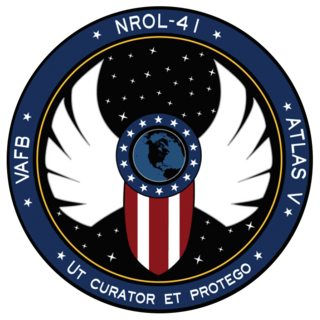
USA-215, also known as NRO Launch 41 or NROL-41, is an American reconnaissance satellite, operated by the National Reconnaissance Office (NRO). Launched in 2010, it has been identified as the first in a new series of imaging radar satellites, developed as part of the Future Imagery Architecture (FIA) programme, to replace the earlier Lacrosse spacecraft.
USA-234, also known as NRO Launch 25 or NROL-25, is an American reconnaissance satellite, operated by the National Reconnaissance Office. Launched from Vandenberg Air Force Base in 2012, it has been identified as the second radar imaging satellite to be launched as part of the Future Imagery Architecture programme.
USA-184, also known as NRO Launch 22 or NROL-22, is an American signals intelligence satellite, operated by the National Reconnaissance Office. Launched in 2006, it has been identified as the first in a new series of satellites which are replacing the earlier Trumpet spacecraft.
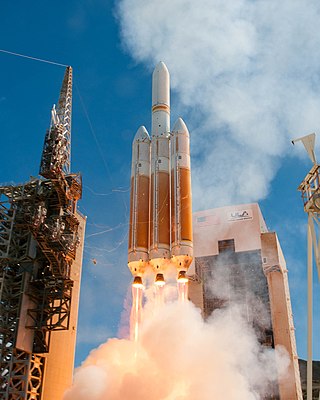
USA-245 or NRO Launch 65 (NROL-65) is an American reconnaissance satellite which is operated by the National Reconnaissance Office. Launched in August 2013, it is the last Block 4 KH-11 reconnaissance satellite, and the last official spacecraft to be launched in the Keyhole program.
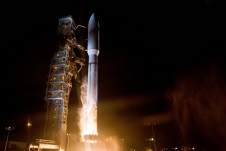
USA-247, also known as NRO Launch 39 or NROL-39, is an American reconnaissance satellite, operated by the National Reconnaissance Office and launched in December 2013. The USA-247 launch received a relatively high level of press coverage due to the mission's choice of logo, which depicts an octopus sitting astride the globe with the motto "Nothing Is Beyond Our Reach". The logo was extensively criticized in light of the surveillance disclosures in July 2013.

USA-268, also known as NROL-37, is an American signals intelligence satellite. Though officially classified, it is presumed to be an Advanced Orion satellite, making it one of the largest and most expensive satellites ever built.













